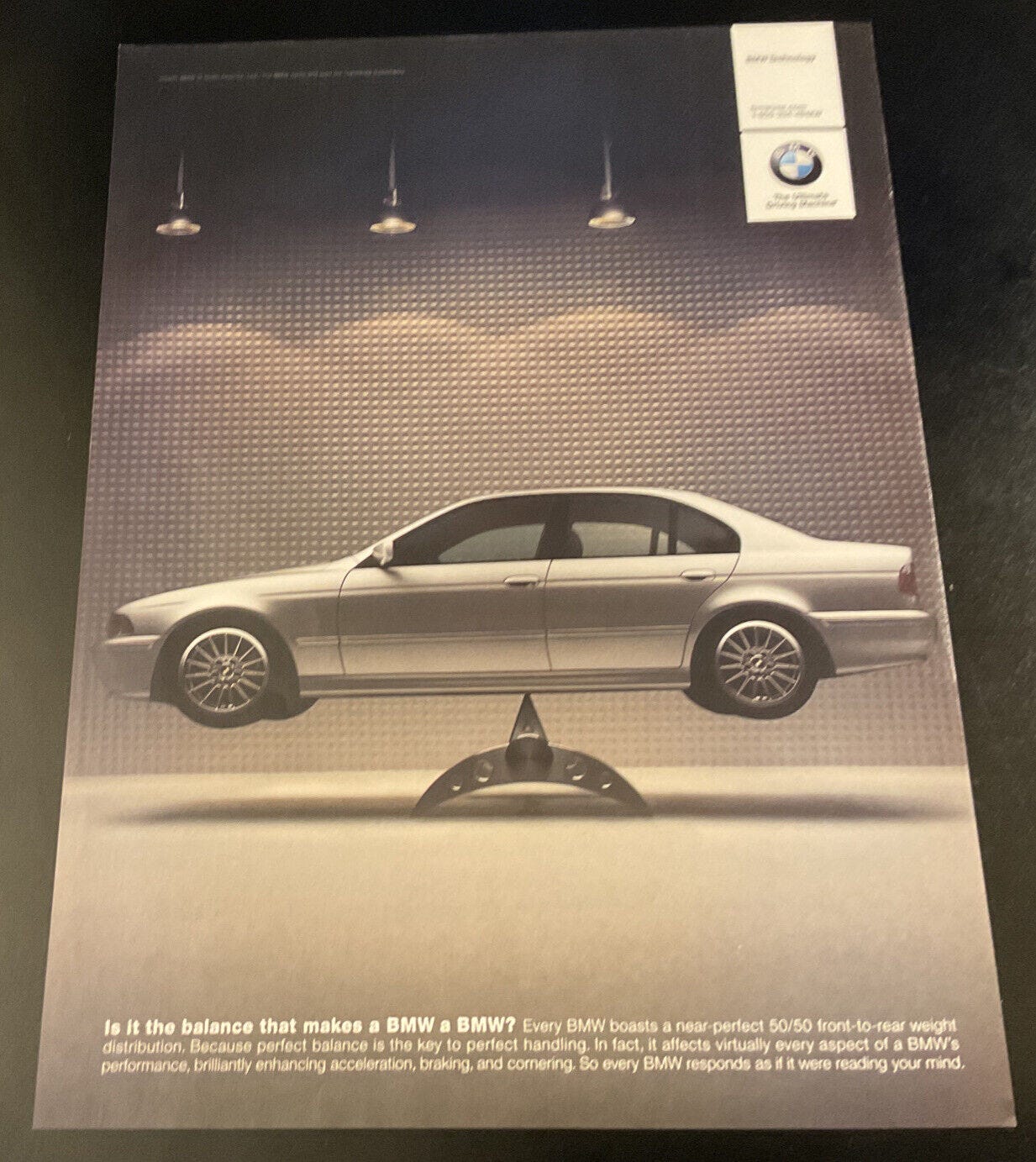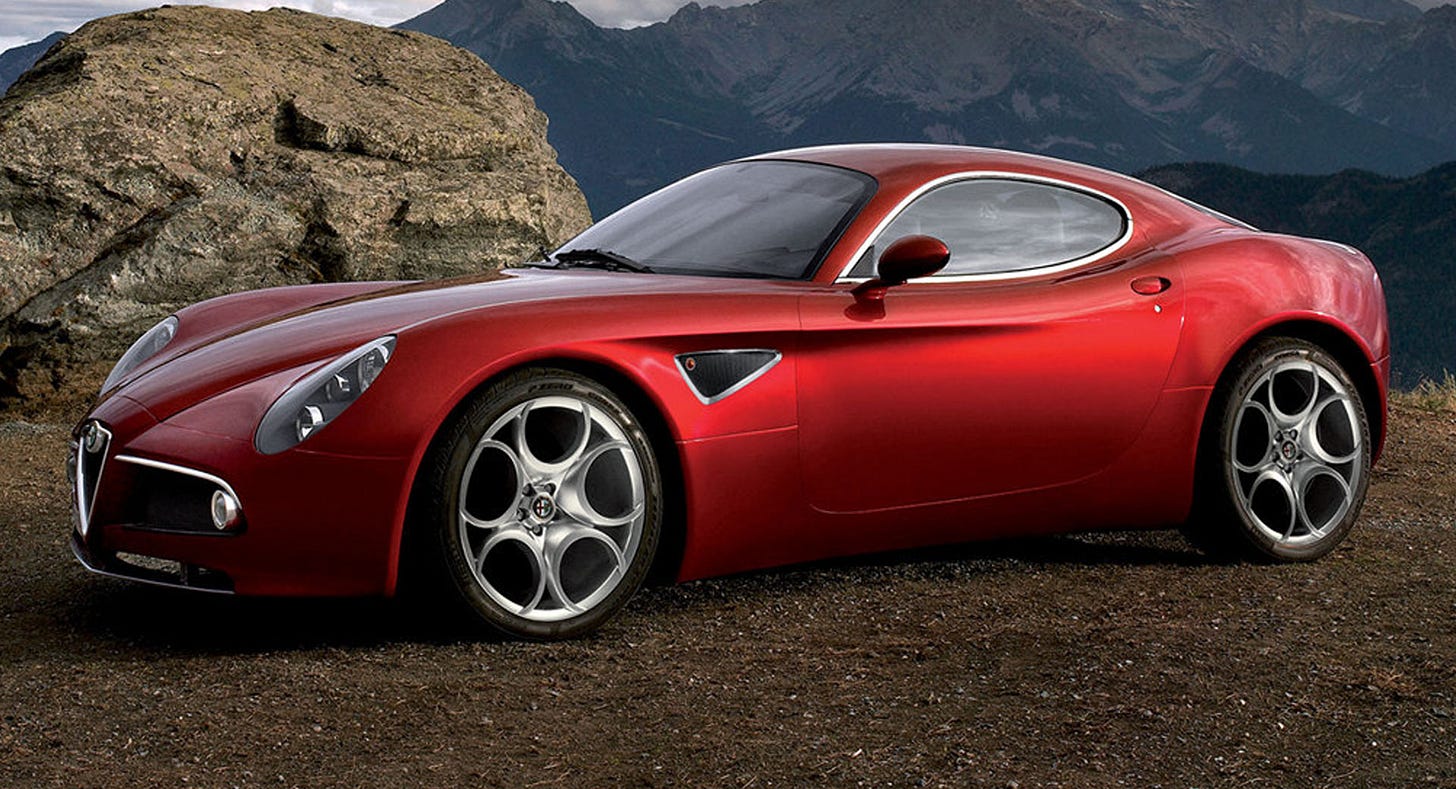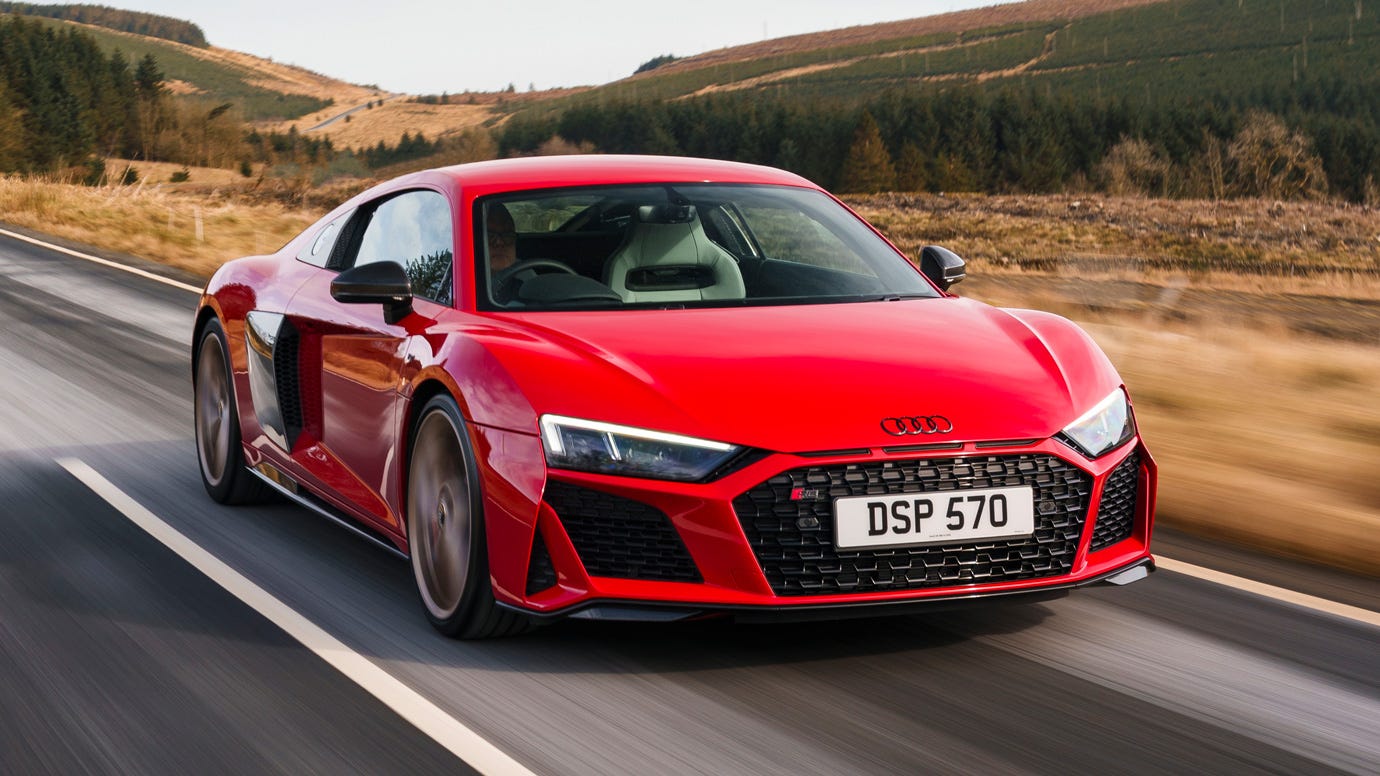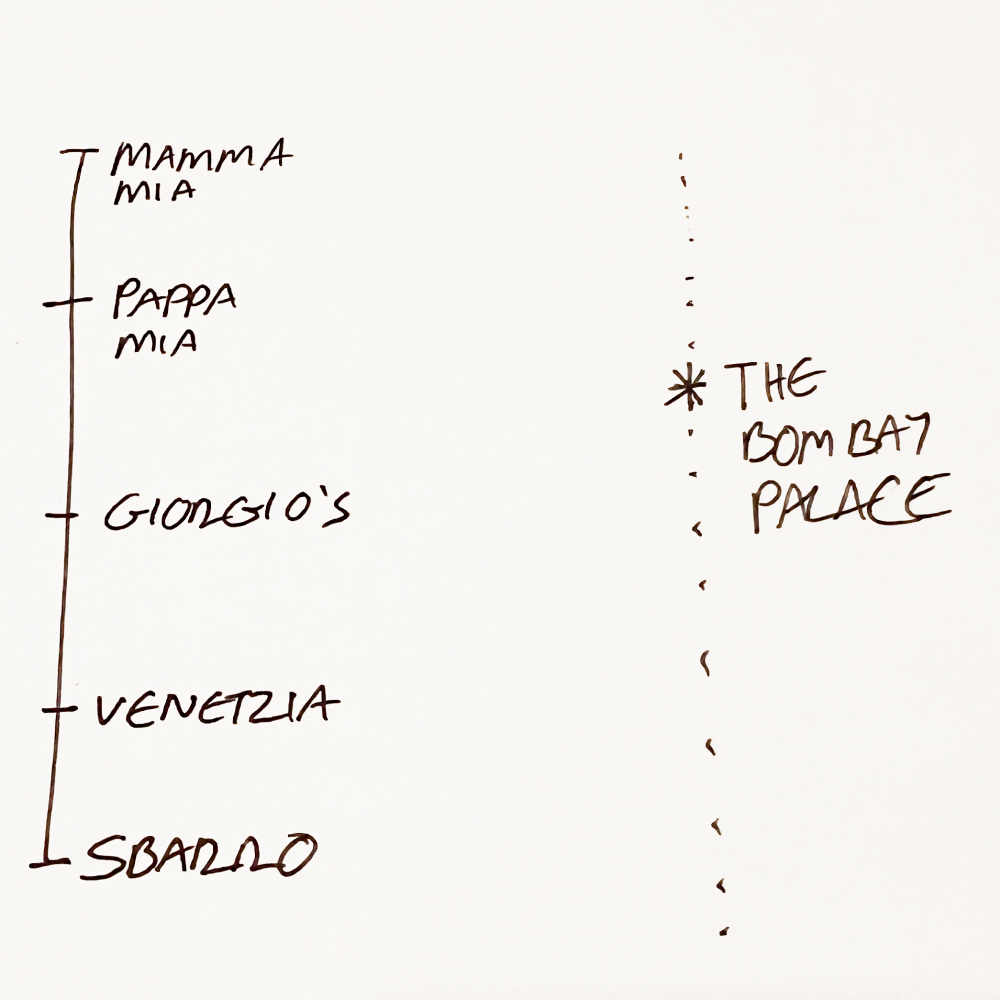Category Proof In Engineering
How the Difference Between Audi and BMW Can Help Your Product Avoid Price Comparisons
What’s the difference between an Audi and a BMW?
Or what about Mercedes-Benz? Or Porsche?
They’re all premium German brands. They compete in identical subcategories and price points. They appeal to much the same customers. So how does one choose?
What these brands all have in common, is that they agree on why they are different from each other.
They have a Point of View. And their products prove it.
Having worked for six different premium car brands in my career, I’ve found that understanding automotive marketing is an excellent foundation for understanding ALL marketing because cars are an expensive, “high consideration” purchases and compete in one of the most extreme competitive dog fights of any category.
But you don’t need to be a car brand to differentiate with a product POV. I’ve deployed this strategy for radical differentiation in industries ranging from eyewear, to mattresses to dev tools. And you might also find it in your vacuum cleaner, your email platform, or your bra.
But let’s start by learning from the automotive masters.
How POV’s Drive Auto Brand Positioning
“A great brand has a strong POV.
But not just something that marketing has made up, it must be something grounded in the product.”
Scott Keogh - Former CMO, Audi USA (Paraphrasing from memory)
BMW Go High, Mercedes Don’t Go Low
A brand immersion day is when a car brand invites its marketing agency partners to finally have a chance to touch the product they are tasked with selling.
There are typically lectures about the brand, a guided walkthrough of a vehicle or two, and the highlight - a chance to actually drive one! (Or in my case, a chance to get a Mercedes SL500 up to 90mph on an English country lane and drift sideways around a roundabout or two)
Safely back at Mercedes-Benz UK HQ, our presenter sketched something like this graph on the whiteboard.
The horizontal line, he explained, represented your journey through life. The wavy line charted your life experiences of highs and lows.
The mission of BMW, he explained, is to accentuate those highs. But the priority of Mercedes is to minimize or eliminate the lows. That’s the difference.
He delivered his lecture while standing next to a brand-new Mercedes-Benz S-Class, and he moved immediately to explain how this philosophical difference was proven by the vehicle itself.
He demonstrated probably a dozen or more “little touches” of product detail that were considered important by Mercedes, but absent on a BMW. Things such as:
A shiny clean handle that hides inside the boot (trunk) and protrudes for you to hold (Because a Mercedes driver should never get their hands dirty)
Extra deep rain gutters at the side of the windscreen “A-Pillars” (Because a Mercedes driver should not have to look through dirty side windows)
Seatbelts that slacken and steering wheels that move automatically to make getting out of the car easier
And many more.
The brand belief was that a Mercedes driver should never experience anything to ruffle their composure or interrupt the grace and comfort with which they should experience driving.
This S-Class, he said, was the ultimate proof of their conviction.
What makes an Audi or BMW driving experience?
6 years and 6 automotive brands later, I was again taught why BMW’s opinions are wrong. This time by the folks at Audi USA…
As they saw it:
BMW's Point-Of-View is that what makes the ultimate driving machine is balance.
That’s why every BMW has an engine in the front and rear wheel drive, creating perfect front-back balance.
But Audi knows this is wrong.
What actually matters most is grip. You only have 4 points of contact with the road, so they should all have maximum control and traction.
That’s why every Audi is available with Quattro - the world’s best All Wheel Drive system.
Now if you’re not much of a car fan, this may be the first time you’ve ever heard this distinction. But look again at their marketing through this lens and see if you can spot it.
Audi and Alfa Romeo agree to disagree
POVs can really stick in a category when you can call attention to why a competitor’s POV is wrong, and they agree with you.
For example, back in ~2010 I led a team working on a driving app for Alfa Romeo, and we were invited to Torino to interview their chief test driver. A former professional racing driver and director of the Alfa racing school, he was, we were told, the living embodiment of Alfa’s driving philosophy.
“So you say Alfa Romeo is a driver’s car, but BMW and Audi claim the same. So in what way is an Alfa Romeo a true driver’s car that say, an Audi is not?” I asked him.
He replied that everything about an Alfa Romeo was tuned and balanced to be the perfect experience mechanically, without the need for computer technology assistance. In an Alfa, the traction control and other technology were there to save you if you f***d up, but A good driver should never need it.
With visible disgust, he described how an Audi uses technology “Just to make it driveable.” He admitted this did make an Audi a more accessible car, but not a true driver’s car.
Now the cool thing is, Audi would completely agree with him.
Audi do indeed believe that a great driving experience should be accessible to anyone without needing to attend a race driving school first. In fact, that was one of the guiding design principles behind the Audi R8, which is known for not just being a great performance car, but a great performance experience for any driver.
How POVs create premiums
It is no coincidence that all of these examples are premium brands. Because when you convey a clear and assertive POV that customers resonate with, it helps you charge and maintain a premium price.
Here’s how:
Turn a comparison into a choice
What the Audi, BMW and Alfa examples do is present the customer with a choice, rather than a comparison.
Which POV do you believe? Balance or grip? If you believe balance is what matters, you buy BMW. If you believe grip is what matters, you’ll never settle for less than Quattro.
Forcing a choice, rather than a comparison is one of the core principles of Category design.
My preferred approach to positioning, Category Design teaches that you should avoid arguing why you are ”better,” and instead focus on why you are “different.”
I admit it took me a while to realize just how meaningful this distinction is.
It finally clicked when I at some point heard Christopher
explain it in the context of choosing where to eat dinner. I can’t find the exact reference right now, but to paraphrase from memory:Deciding whether to eat Italian or Indian food is a choice. Choosing between Mamma Mia’s or Pappa Mia’s is a comparson.
When something is “better” it is on a continuum of quality and price just like other competitors.
To riff off Lochhead’s example, let’s say you decide that Mamma Mia’s is better than Pappa Mia’s, but note that it’s also 20% more expensive. Next, you ask yourself, is it 20% better? And the decision has suddenly become a price comparison.
You can only be “better” relative to something else. So saying that you are the best, most ____ or ultimate ____, implicitly acknowledges that there are others to whom you can be compared.
But when you are different, the price continuum doesn’t exist.
Never have you asked yourself “Which is better, Mamma Mia’s or the Bombay Palace?” It’s just an illogical comparison to compare Indian and Italian food. It doesn’t work - there is no “better” because they are on different continuums.
How customers decide is by first choosing a category (Indian or Italian food?) then they make a comparison of the competitors within that category (Mamma Mia’s or Pappa Mia’s?)
But if they chose Indian food, and their town had only one Indian restaurant, the price is not a factor, regardless of how many Italian restaurants offer to undercut their prices.
You too can be like that Indian restaurant.
Create a POV that positions you in a category of one,
set pricing that can be benchmarked to none.
The POV drives the brand
Having a clear point of view (POV) helps determine what your brand should and should not communicate or do.
During the concept stage of preparing to launch a new Audi model to the US, (I think it was the 2014 RS5) I recall one of Audi’s agencies bringing a super cool concept to the table. We would hire a certain red-hot stunt driver to drift the RS5 around a course of containers in a shipping yard, creating many shareable clips for social media along the way.
While most people in the group liked the idea, Audi CMO Scott Keogh saw straight through it.
“It’d be a great ad, for sure.
But it’s a BMW ad. Not an Audi ad.
Audi’s don’t drift.
They grip.”
An Audi ad should be remarkable for telling the story of Audi’s POV about grip. For example:
But it’s not just about customer marketing. Alignment on a POV also helps you decide what to do inside of your company for employees.
At 30 years old I had the privilege of working for both McLaren and Ferrari in parallel, which afforded me the chance to see inside the HQ’s of both Ferrari in Maranello and McLaren in Woking. (And without needing to spend $200k on a car for the privilege.)
Each factory, though strikingly different, is a very deliberate representation of the brand's point of view.
Inside the Ferrari factory, you’ll find trees and plants given to remind the staff of the beauty of nature.
McLaren, on the other hand, would never indulge in such frivolity.
McLaren believes that form follows function and nothing superfluous should encumber an experience that does not serve a deliberate purpose. That’s why McLaren’s factory is surgically clean and strikingly minimal.
The product proves the POV
At this point, you might be thinking “Yeah yeah yeah, I know, start with why and all that” and be tempted to list many brands project opinionated messages in their campaigns.
But this article is not about what you say, it’s about what you do. It’s about how your product influences what you say and proves you mean what you say.
This article’s title is a play on Audi USA’s tagline “Truth In Engineering.” With a few controversial exceptions, you cannot buy an Audi that does not have at least the option of Quattro AWD. Many models do not offer 2WD at all. This deliberate decision of what NOT to offer proves their conviction for their grip POV.
But it also proves the inverse, that they don’t believe in the arse-out drifting experience offered by BMW, Alfa Romeo, and many other brands. And that’s just fine by them.
If a driver was convinced that real driving was about the skill and autonomy of the driver, not assistive technology, the Audi product itself proves that it is not the car for them.
This is the highest attainment of a great POV:
Present your customers with a choice
Let the POV steer what you do and don’t do
Ground it in proven details of how your product is engineered.
Your POV is Your Path to Premium
I use cars to illustrate these points because few industries put so much deliberate effort into how their product proves their positioning. And rarely do you find a product so complex as a Volvo that can distill it’s entire POV into one word. (Safety)
Hopefully your category is not as crowded and competitive as the car market, but you can still use a POV to command a price premium in whatever industry you happen to be in.
Just a decade or two ago, there were only a few established ways of commanding a price premium. These were “luxury” brand credentials such as heritage, scarcity, craftmanship and so on.
Today a modern premium brand is one that is able to charge a premium based on many other vectors, such as:
Eco or sustainability credentials
Such as how people pay more for Rothys flats or Patagonia jackets due to their product virtuesDesign or user experience
Like how Apple is able to consistently charge more for equivalent features in a superior designTechnical advancement
For example how Tesla disrupted premium car markets with models that were technical marvels, but missing most of the traditional hallmarks of premium car brandsNiche tailoring
Such as how Convertkit can charge more than Mailchimp for less functionality, by focusing entirely on the “creator” communityInclusivity
Like when Thirdlove was the first to offer bras in twice as many sizes, and many more shades of “nude” that match more diverse skin tones.
These are very different examples, but they all work by asking the customer to choose what they believe in before comparing prices. Done well, the customer is less willing to betray their own ideals by switching to a competitor to save a few pennies.
Make sacrifices, be consistent
If creating a premium POV requires clarity, maintaining it requires integrity.
You’d never see Tesla make a diesel car just make it more affordable. Nor would you get a cheaper Patagonia that discards their ecological concerns.
(And hopefully Siri will be the last sub-par product that Apple releases!)
Does Your Product Prove Your POV?
Possessing an assertive point of view is the initial step towards radical differentiation through category design. However, the work doesn't stop there.
Prove the significance of your POV by engineering it into the product itself.
Start with these questions:
What do you believe about the problem you solve, that other people would disagree with?
This is your "contrarian insight", which allows you to see the problem differently to others who might be offering alternative solutions to the same problem.What does that require of a solution?
Given this insight into the problem, what do we need in the solution that has never been seen before?Make that evident and obvious in your product
Just as Dyson designed his vacuum cleaners to make his bagless POV visible, how can you ensure that customers directly experience your unique POV and can talk about it?Tell that story to the world
As a full narrative - the problem insight, the solution mandate, and the proof within your product - as a story.
Start now, ask me if you need help
I intend to write additional practical steps and case studies for POV generation soon. However, you don't need to wait to begin.
I currently hold regular meetings with subscribers interested in discussing the concepts within Traction Design. To schedule yours, subscribe to this publication. You will receive a link to subscriber office hours in your welcome email.
If you already subscribe, hit reply and we can set something up.














